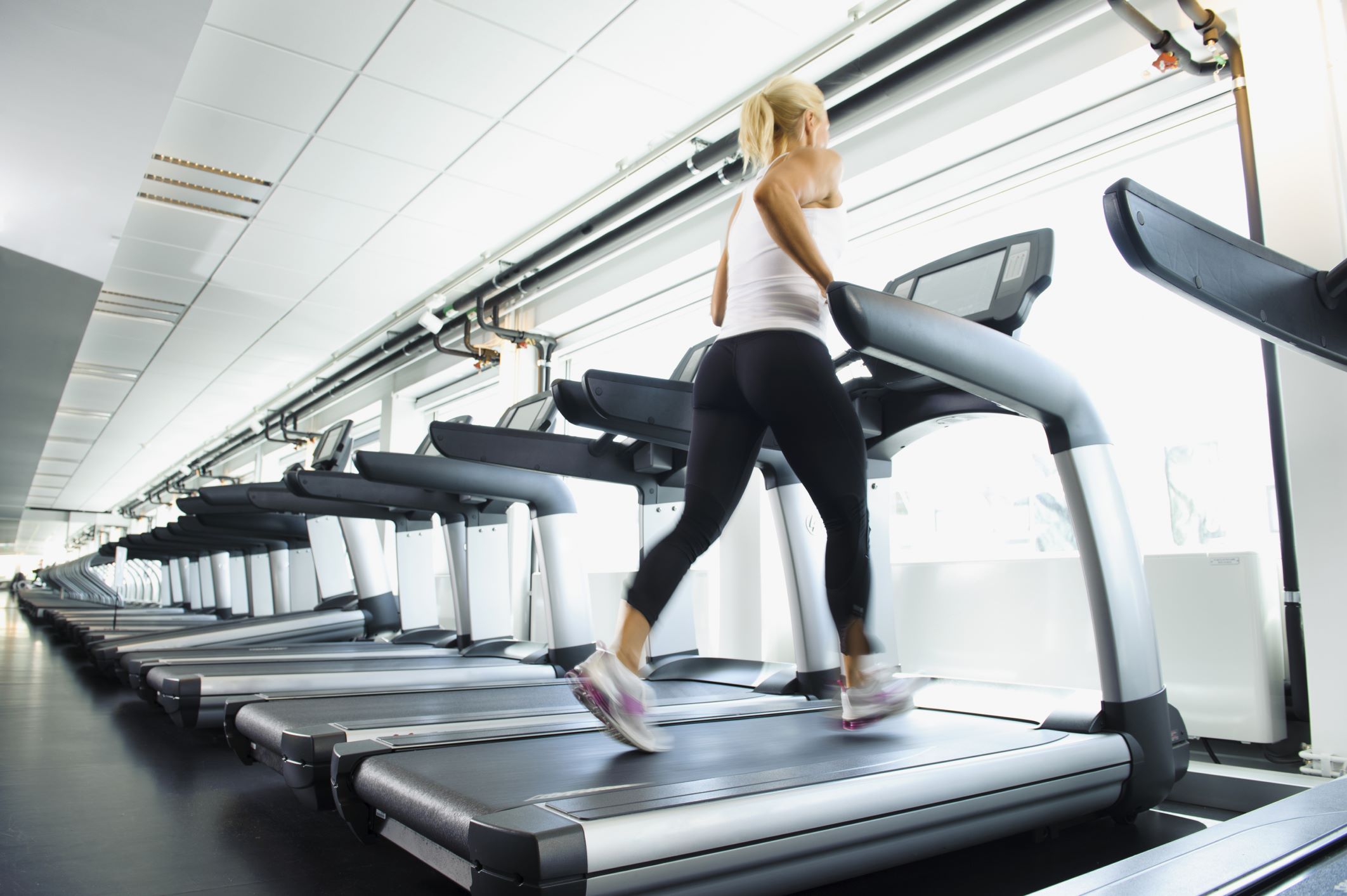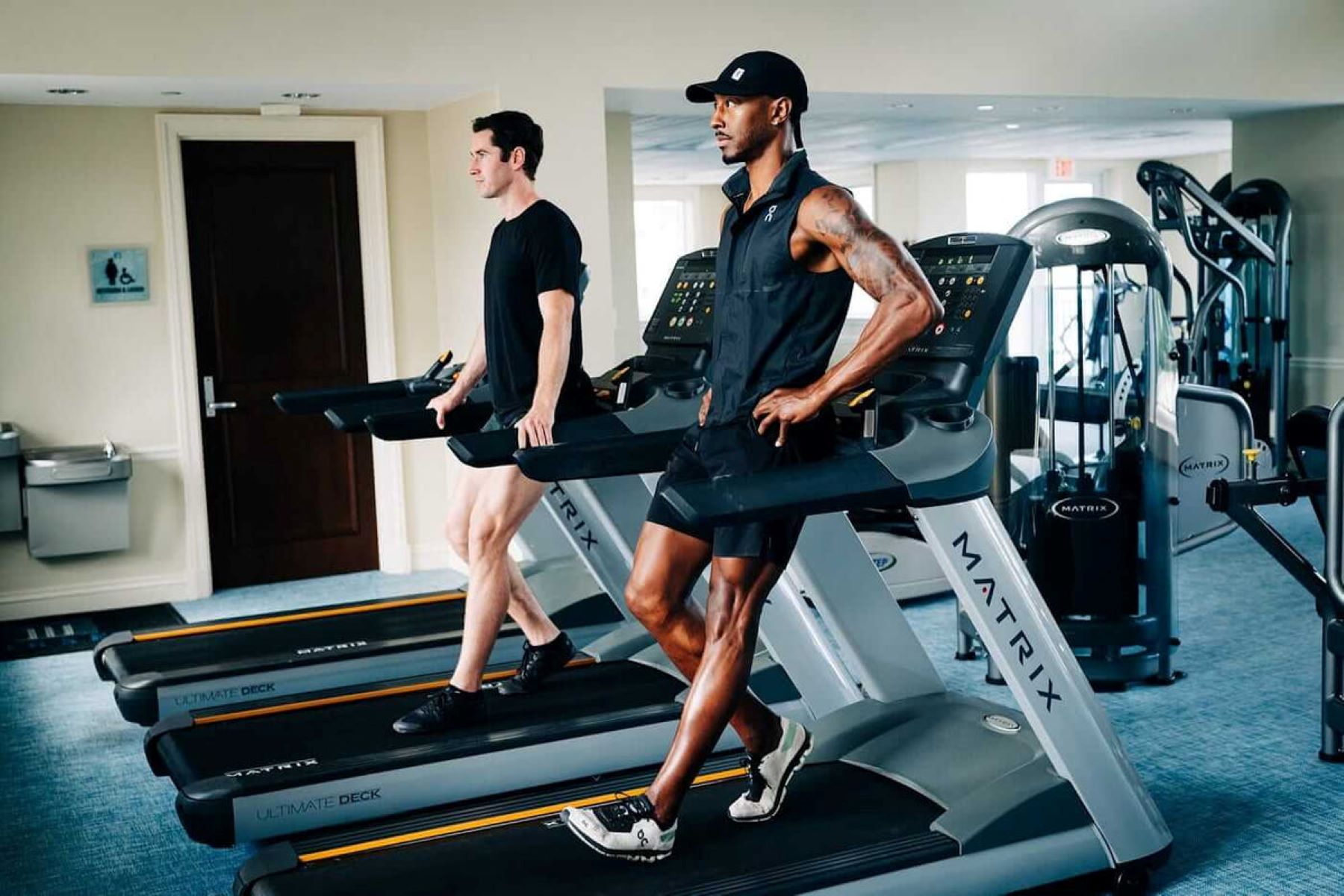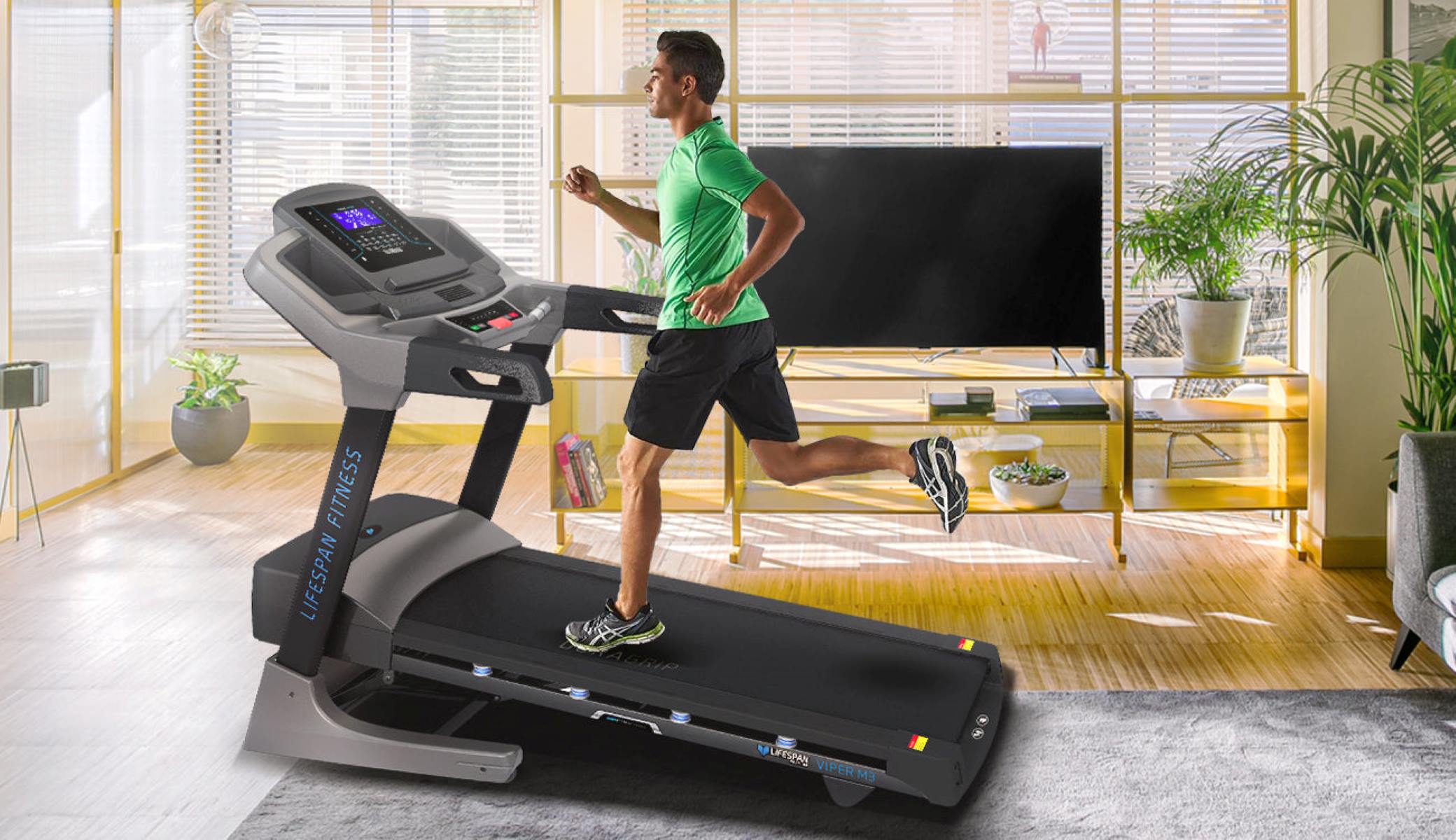

Featured
Why Is Running On The Treadmill Harder
Modified: January 22, 2024
Find out why running on the treadmill is more challenging and discover the featured techniques to improve your indoor cardio workouts.
Introduction
Running on the treadmill is a popular exercise option for many people looking to improve their cardiovascular health and stay in shape. While running outdoors allows for a variety of terrains and natural elements, running on a treadmill presents a unique set of challenges. Surprisingly, many people find that running on a treadmill can be more difficult than running outside. In this article, we will explore the reasons why running on a treadmill is harder, and why it’s worth pushing through the challenges.
Different factors contribute to the perceived difficulty of running on a treadmill. One of the primary reasons is the lack of variation in terrain. When you run outside, the ground is rarely completely flat, and you have to navigate different surfaces, such as slopes, hills, and uneven ground. These variations engage different muscle groups and require your body to adapt to changing conditions. On the other hand, when running on a treadmill, the belt remains constant, resulting in a repetitive motion that can be physically demanding.
Another factor that makes running on a treadmill more challenging is the absence of external forces. When you run outdoors, you encounter elements like wind resistance, which creates resistance against your body as you move forward. This resistance forces you to work harder, ultimately making your workout more intense. However, on a treadmill, there is no wind resistance, making it easier to maintain a consistent pace, but also reducing the overall effort required.
The monotony and boredom of running on a treadmill can also contribute to its perceived difficulty. Unlike running outside, where you can enjoy the changing scenery, the same view on a treadmill can become monotonous over time. This lack of visual stimulation can make the workout feel more tedious, leading to a sense of fatigue and mental exhaustion.
Additionally, when running on a treadmill, you are devoid of the natural elements such as wind, rain, and varying temperatures that you may encounter outdoors. The absence of wind resistance, in particular, can make running on a treadmill feel easier and less challenging compared to running outside. Without the wind pushing against you, your body doesn’t have to exert as much effort to maintain your desired pace.
Furthermore, running on a treadmill often leads to a more consistent pace compared to outdoor running, which can make it feel more demanding. On the treadmill, you set a specific speed, and the belt carries you along at that pace. There are no natural fluctuations in terrain or gradients that naturally alter your pace. This forced consistency can sometimes make the workout feel harder since your body is not allowed to naturally adapt and adjust to varying speeds.
In summary, running on a treadmill can be harder than running outdoors due to factors such as the lack of variation in terrain, the absence of external forces, the monotony and boredom, the lack of wind resistance, and the consistent pace. However, overcoming these challenges can lead to significant improvements in endurance and physical fitness. So, the next time you step onto a treadmill, embrace the difficulty and use it as an opportunity to push yourself further.
Differences in Terrain
One of the key reasons why running on a treadmill can be harder than running outdoors is the lack of variation in terrain. When you’re running outside, you encounter a variety of surfaces and terrains, such as grass, pavement, trails, and hills. This constant change in terrain engages different muscle groups and challenges your body in various ways.
When running on a treadmill, however, the surface remains constant. The smooth and even belt of the treadmill provides a consistent running surface, devoid of the natural irregularities you would encounter outdoors. This lack of variation eliminates the need for your body to constantly adjust and adapt to changing conditions, making your muscles work harder.
The absence of different terrains also means that you don’t have to contend with slopes or inclines. In outdoor running, navigating uphill segments requires more effort, engaging your leg muscles, particularly your calves and glutes. Running downhill presents its own challenges as it places additional stress on your joints and requires they absorb the impact. These variations in terrain create a dynamic workout that targets different muscle groups and improves overall strength and endurance.
By contrast, running on a treadmill lacks these natural inclines and declines. While some treadmills offer incline settings, they can’t replicate the experience of running on an actual hill. The constant flat surface of a treadmill can be less physically demanding, causing muscles to work differently compared to running outside.
Moreover, the impact on your muscles and joints differs when running on a treadmill versus running on varying terrains outdoors. On a treadmill, the cushioned surface provides some shock absorption, reducing the impact on your joints. This can be beneficial for those with joint issues or injuries. However, the absence of impact can also result in decreased muscle activation, specifically in the stabilizing muscles of your ankles, knees, and hips, which can lead to muscle imbalances and potential injury.
In summary, the lack of variation in terrain when running on a treadmill contributes to the perception that it is harder than running outside. The absence of natural slopes, intense inclines, and varied surfaces means your muscles don’t have to adapt as much. While the consistent and cushioned surface of a treadmill may be advantageous for joint health, it can also lead to muscle imbalances and reduced muscle activation.
Lack of External Forces
Another reason why running on a treadmill can be harder than running outdoors is the absence of external forces. When you run outside, you have to contend with factors like wind resistance, which creates resistance against your body as you move forward. This resistance forces you to work harder and expend more energy.
Wind resistance plays a significant role in outdoor running, especially when running at faster speeds. It increases the effort required to maintain your pace, making your muscles work harder and challenging your cardiovascular system. It simulates a natural resistance that helps improve your overall fitness level.
However, when running on a treadmill, there is no wind resistance. The lack of external forces means that you don’t have to exert as much effort to maintain your speed. The treadmill belt moves at a constant pace, essentially pulling you along and reducing the energy expenditure compared to running outside.
As a result, running on a treadmill can feel easier, especially for those accustomed to running outdoors. Many runners find that they can maintain a faster pace on a treadmill compared to running outside. This ease of maintaining a consistent speed can sometimes lead to a false sense of accomplishment and can be less challenging both physically and mentally.
Moreover, the absence of external forces can also impact muscle activation. When running outdoors, your body constantly adjusts to the ever-changing terrain and external conditions. This requires your muscles to engage different stabilizing muscles to maintain balance and control. However, when running on a treadmill, these stabilizing muscles are not as actively engaged since you’re on a stable, flat surface. This can lead to muscle imbalances and reduced overall stability.
In summary, the lack of external forces, particularly wind resistance, when running on a treadmill can make it feel easier and less physically demanding compared to running outdoors. The absence of resistance can result in a reduced energy expenditure and less activation of stabilizing muscles. It’s important to be aware of these factors and find ways to compensate for the lack of external forces when training on a treadmill.
Monotony and Boredom
One of the challenges of running on a treadmill is the monotony and boredom that can accompany it. Unlike running outdoors, where you are constantly presented with new scenery, the view on a treadmill remains the same. This lack of visual stimulation can make the workout feel more tedious and mentally draining.
When you’re running outside, you have the opportunity to explore different paths, enjoy nature, and engage with your surroundings. This variety helps to distract your mind from the physical effort and adds an element of excitement to your run. Whether it’s running through a park, along a beach, or through a vibrant city, the ever-changing scenery can help make the run more enjoyable.
On a treadmill, however, the view is limited to what’s in front of you. Staring at the same wall, mirror, or TV screen for an extended period can become monotonous and mentally fatiguing. This can result in a decrease in motivation and a higher likelihood of getting bored with your workout.
Boredom during a workout can affect your performance and make the run feel harder than it actually is. When your mind is not engaged, it’s easier to focus on the physical discomfort or fatigue, leading to a perception that the workout is more challenging. This mental fatigue can make the time spent on the treadmill feel longer and more arduous.
Furthermore, the absence of external distractions can also impact your stride and running form. When running outside, you naturally adjust your stride length, pace, and even your running style in response to the terrain. This dynamic movement helps to distribute the workload across different muscles and prevents excessive stress on specific areas.
On a treadmill, however, the consistent and limited surface can lead to a repetitive stride pattern. This lack of variation in movement can place excessive stress on certain muscles, potentially leading to overuse injuries. Additionally, the lack of natural variations can also contribute to muscle imbalances and reduced overall strength in certain areas.
To combat the monotony and boredom of running on a treadmill, it’s important to find ways to keep your mind engaged and motivated. You can try listening to music or podcasts, watching TV shows or movies, or even varying your workout routine with interval training or incline settings. By finding ways to distract your mind and make the workout more enjoyable, you can overcome the mental challenges and maintain your motivation through the entire run.
Lack of Wind Resistance
When it comes to running on a treadmill, another factor that can make it harder is the lack of wind resistance. When running outdoors, you have to contend with the resistance of the wind pushing against your body as you move forward. This resistance forces you to work harder, ultimately making your workout more intense and challenging.
Wind resistance plays a significant role, especially when running at faster speeds. It increases the effort required to maintain your pace, making your muscles work harder and stimulating greater cardiovascular endurance. The need to overcome this resistance can also help improve your running form and alignment as you push against the force of the wind.
However, on a treadmill, there is no wind resistance. The absence of external forces means that you don’t have to exert as much effort to maintain your pace. The treadmill belt moves at a constant speed, essentially pulling you along, and reducing the energy expenditure compared to running outside.
Running without wind resistance can lead to a misguided sense of effort. It may feel easier to maintain a certain speed on a treadmill compared to running outside due to the absence of external factors. Consequently, this can affect your performance and the overall intensity of your workout.
Moreover, the lack of wind resistance can also impact your running form. When running outside, your body naturally adjusts to the resistance of the wind. You lean slightly forward, engaging your core and using your arms for balance and propulsion. This postural adjustment helps to improve your biomechanics and efficiency, generating more power with each stride.
However, on a treadmill, where there is no wind pushing against you, you may inadvertently adopt a more upright posture. This can lead to a less efficient stride and reduced engagement of your core and upper body muscles. Consequently, you may experience a decrease in overall muscle activation and a potential decrease in running efficiency.
In summary, the lack of wind resistance when running on a treadmill can contribute to the perception that it is harder to run outdoors. The absence of this external force reduces the overall effort required to maintain your pace and can impact your running form. It is important to be aware of this difference and find ways to compensate for the lack of wind resistance when training on a treadmill.
Inconsistent Pace
One noticeable difference between running on a treadmill and running outdoors is the ability to maintain a consistent pace. When running outside, your pace naturally fluctuates due to various factors such as the terrain, weather conditions, and fatigue. These variations in pace engage different muscle groups and provide a more dynamic workout.
On the other hand, running on a treadmill allows you to set a specific speed, and the belt carries you along at that pace. The constant and consistent movement of the treadmill belt eliminates the natural fluctuations in terrain or gradients that you would encounter outdoors. As a result, your body doesn’t have to adapt and adjust to varying speeds, making the workout feel differently compared to running outside.
This forced consistency can sometimes make running on a treadmill feel harder, especially for those who are used to the natural variations of outdoor running. The absence of natural variations in pace means that your body isn’t allowed to naturally adapt and adjust, leading to a potential increase in perceived effort.
Moreover, the inability to vary your pace on a treadmill can impact your ability to challenge yourself and improve your running performance. In outdoor running, you can push yourself to run faster during certain sections or intervals, simulating a race-like scenario. This variation in pace helps to improve speed, endurance, and overall fitness.
While some treadmills offer programming options such as interval training or incline settings, these still lack the organic nature of outdoor running. You may find that it takes more mental effort to push yourself to increase your pace or intensity on a treadmill compared to running outside.
Additionally, running at a consistent pace on a treadmill can also lead to a different muscular effort compared to outdoor running. The treadmill’s belt helps propel your movement, requiring less effort from your leg muscles to generate forward momentum. This decreased muscular effort can lead to different muscle engagement patterns and potentially result in muscle imbalances.
In summary, the consistent pace of a treadmill can contribute to the perception that running on it is harder compared to the variations in pace experienced during outdoor running. The absence of natural fluctuations in terrain and the reduced need to adjust pace can lead to a different muscular effort and potentially impact overall performance and muscle engagement.
Impact on Joints
One important factor to consider when comparing running on a treadmill to running outdoors is the impact on your joints. The surface you run on can significantly influence the stress placed on your joints, specifically in your knees, ankles, and hips.
When running outdoors, the terrain varies, and this variability can help distribute the impact of each footstrike across different areas. For example, running on grass or trails tends to be softer and more forgiving on your joints compared to running on concrete or pavement. The natural variability of the terrain allows your joints to absorb the impact and reduces the risk of overuse injuries.
On the other hand, running on a treadmill typically involves running on a flat, cushioned surface. The cushioning of the treadmill provides some shock absorption, which can be beneficial if you have joint issues or sensitivities. It reduces the impact on your joints, particularly in your knees, ankles, and hips.
However, the decrease in impact may come at the expense of reduced muscle activation. The cushioned surface of a treadmill absorbs some of the forces that would normally be transferred to your muscles and tendons. This can result in decreased muscle activation, particularly in the stabilizing muscles that support your joints.
Furthermore, the repetitive motion of running on a treadmill can also contribute to joint fatigue and potential overuse injuries. Unlike running outdoors, where the terrain constantly changes, running on a treadmill involves a repetitive pattern of movement. This repetition can place additional stress on your joints, which may increase the risk of developing joint-related issues over time.
It’s essential to listen to your body when running on a treadmill and pay attention to any signs of discomfort or pain. If you have existing joint issues, it is advisable to consult with a healthcare professional or a qualified trainer to ensure that you are using the treadmill correctly and safely. They can provide guidance on proper form, footwear selection, and techniques to minimize joint stress.
In summary, running on a treadmill can provide a more cushioned surface that reduces the impact on your joints. However, the decrease in impact can result in decreased muscle activation and potentially increase the risk of joint-related issues. It’s important to find a balance between protecting your joints and ensuring that you are still engaging the necessary muscles to maintain strength and stability.
Psychological Factors
While physical aspects are vital, it’s also important to consider the psychological factors that can contribute to the perception that running on a treadmill is harder than running outdoors. The mind plays a significant role in our endurance and overall performance during exercise.
Firstly, the lack of external stimuli and changing scenery on a treadmill can lead to boredom and reduced motivation. Running outside allows for a dynamic and engaging environment, with ever-changing sights, sounds, and surroundings. This variety distracts the mind from the physical effort, making the run feel more enjoyable and less mentally taxing.
In contrast, running on a treadmill often involves looking at the same stationary objects, such as a wall or a mirror, and can quickly become monotonous. The lack of visual stimulation can make the workout feel tedious and mentally draining, potentially leading to a decrease in motivation and a perception that the workout is harder.
The absence of natural distractions, such as other people, wildlife, or changing weather conditions, can also impact mental engagement. Running with a group or being surrounded by nature can provide a sense of camaraderie, connection, and inspiration that can help push through challenging moments. These elements are often missing in the controlled environment of a treadmill workout.
Furthermore, the lack of progression markers, such as distance markers or landmarks, on a treadmill can also affect psychological endurance. When running outdoors, you can set goals based on physical landmarks or distances, breaking the run into smaller, more manageable sections. This sense of progress and achievement can boost motivation and make the run feel easier.
On a treadmill, however, the only progression measure is usually a set time or distance displayed on the machine. Without the visual cues of forward progress, the workout can feel more mentally demanding and harder to maintain motivation.
Finally, the absence of fresh air and exposure to natural elements can impact mental well-being. Running outdoors allows you to feel the wind on your face, experience different temperatures, and even enjoy the scents of nature. These sensory experiences can contribute to a more positive and enjoyable exercise session.
In summary, the psychological factors associated with running on a treadmill, including boredom, lack of external stimuli, absence of progression markers, and limited exposure to natural elements, can contribute to the perception that it is harder than running outdoors. Understanding and addressing these factors can help maintain motivation and mental endurance during treadmill workouts.
Conclusion
Running on a treadmill presents a unique set of challenges that can make it feel harder than running outdoors. Factors such as the lack of variation in terrain, the absence of external forces, the monotony and boredom, the lack of wind resistance, the consistent pace, the impact on joints, and the psychological factors all contribute to this perception. However, it’s important to remember that these challenges can be overcome with the right approach and mindset.
Understanding the differences between running on a treadmill and running outdoors is crucial for managing expectations and optimizing your workouts. While running on a treadmill may lack the natural variations and external forces present in outdoor running, it also offers advantages such as a cushioned surface and controlled conditions.
To make your treadmill workouts more enjoyable and impactful, consider incorporating interval training, varying incline settings, or adding entertainment such as music or TV shows. Breaking up the monotony and engaging your mind can help push through mental fatigue and keep your motivation high.
Additionally, be mindful of your running form and ensure that you’re maintaining proper posture and engaging the necessary muscles. This can help reduce the risk of muscle imbalances and joint issues. Listening to your body, taking breaks when needed, and seeking guidance from professionals can also contribute to a safe and effective treadmill running experience.
Ultimately, the choice between running on a treadmill or outdoors depends on personal preference, fitness goals, and individual circumstances. Both have their own benefits and challenges, and incorporating a mix of both can provide a well-rounded exercise routine.
In the end, whether you choose to embrace the difficulties of running on a treadmill or opt for the ever-changing landscapes of outdoor running, the most important thing is to stay consistent, listen to your body, and enjoy the process of improving your fitness and overall well-being.









